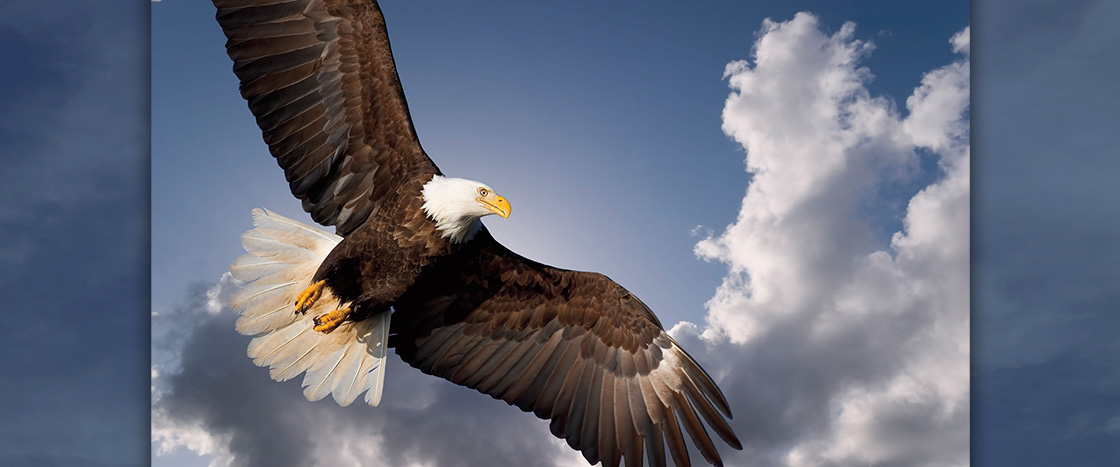Hallie lay at the edge of a river, her feathers coated with mud. Sharp pain shot up and down her left wing.
Just hours earlier, the eagle had been soaring over a swampy wilderness in eastern Florida. It was December 30, 1971, and the winter had been unusually warm so far. A humid breeze tickled Hallie’s feathers as she skimmed through the trees. Her wings stretched out 6 feet across—as long as an adult human is tall. She may have been on her way back to her nest, where her mate was waiting with two eggs that would soon hatch into baby eagles.
All of a sudden . . . POP.
Something tore into Hallie’s wing, instantly shattering the bone to pieces. The eagle could not have known she had been shot illegally by a hunter. All she could tell was that she was falling, falling to the muddy ground below.
And that’s where she stayed, her wing too injured to carry her back to her treetop nest. Would she find the strength to fly back home? Would she even survive?
Hallie lay on the ground, her feathers covered with mud. She felt pain up and down her left wing.
Just hours earlier, the eagle had been flying in the sky over eastern Florida. It was December 30, 1971. A breeze tickled Hallie’s feathers as she flew. Her wings stretched 6 feet across—as long as an adult human is tall. She may have been on her way back to her nest.
All of a sudden . . . POP.
Something tore into Hallie's wing, breaking the bone to pieces. The eagle had been shot illegally by a hunter. Suddenly, she was falling to the muddy ground below.
And that’s where she stayed. Her wing was too injured to fly. Would she be able to get back home? Would she even survive?

